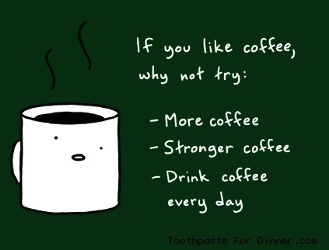
As you will know if you’ve been browsing the ManageWP blog in recent times, I am currently very interested in the concept of structuring blogs to maximize a positive user experience. This started with an article I posted a couple of weeks ago — Is Blogging the Best Content Publishing Format for WordPress Users?
With the above in mind, today I want to focus on one used and abused form of blog navigation — the tag. Very rarely do I come across a WordPress blog that uses tags effectively, but the reality is that utilizing tags in a well thought-out manner can result in benefits to both the user experience and in terms of SEO.
In this post I am going to give you a real-life example of the ways in which I have utilized tags on my blog in order to give you an idea of how you can use them to good effect on your own WordPress site.
The Benefits of Tagging
First of all, let’s explore why tagging can be a good thing. After all — tags tend to get a bad rap around the blogosphere these days, so it would make sense to first explain why they can still be useful for your site.

As far as I am concerned, the benefits of tagging are fourfold:
- Tags can provide visitors with a specific and contextually relevant set of posts
- Tag pages provide search engines with context with which to ascertain the relevancy of your site as a whole
- Tag pages can rank in search engines for relevant keywords
- Tags can be used to aid related posts plugins (most notably YARPP)
Not only can tags keep visitors on site by providing them with a highly specific set of posts that are likely to be of interest to them, they can also bring visitors to your site via search engines. And before you start worrying about duplicate content issues, don’t — the whole thing’s a myth.
How Should You Tag?
I’ve gone into some detail on the “art” of tagging before here on the ManageWP blog — most specifically in the following posts:
- The Right Way to Use Categories and Tags in WordPress to Boost SEO
- WordPress Tags: Everything You Need to Know
But tagging correctly is not easily done — it requires an intuitive understanding of exactly what you are trying to achieve (which is not always immediately apparent). Although every blog is different, I believe that real-life examples can be helpful in making your own path clearer. With that in mind, let’s take a closer look at my own blog:

For those of you who don’t know, my blog chronicles my own efforts in making money online in an effort to help others achieve the same. As such, the content focus is on different money making strategies along with advice for quitting your job and establishing your own business.
For categories and tags (which must walk hand-in-hand) I have taken a less is more approach. There are just nine categories:
- Blogging
- Freelancing
- How to Succeed
- Income Reports
- Internet Marketing
- Miscellaneous
- Quitting Your Job
- Search Engine Optimization
- Social Media
One might immediately argue that a “Miscellaneous” category isn’t useful to the visitor, and you would be right. However, this category only serves as a holding place for outdated posts (or content that I do not think is good enough). I do not list the “Miscellaneous” category anywhere on the blog.
As for the rest of them, you can see that I have taken a very “big picture” approach — splitting the content into broad categories. If you’re interested in blogging then you know where to go — the same goes for freelancing, SEO, social media, and so on.
So where do tags come into the mix? Well let’s say you’re interested in social media, and more specifically, Twitter. That level of specificity is when tags really come into their own — just click here. That link takes you directly to the “Twitter” tag page on my blog, which of course links to all posts that have a primary focus on that particular social network:

I’m sure you can see why it would make no sense to have a “Twitter” category on my blog, which is why tagging is so useful. There are similar examples amongst various other tags I use — here are some other obvious connections (category followed by tag):
- Internet Marketing -> Affiliate Marketing
- Freelancing -> Freelance Writing
- Search Engine Optimization -> Link Building
- Quitting Your Job -> Service Businesses
In a way the tags act as sub-categories, allowing you to produce highly specific pages that are useful for visitors and search engines alike. It should be clear how this can be extremely useful for visitors to your site, but as mentioned above, the benefits do not stop there. For instance, you can also use tags to produce bespoke content buckets, as I explored the other day.
Do You Tag?
I am aware that many people are “anti-tag”. I know that some still believe (and often perpetuate) the myth that Google penalizes sites that use tags, but in reality, they can be enormously useful for visitors and beneficial for you.
With that in mind, do you tag? Or having read this, are you tempted to give it a go? I’d love to read your opinions — let us know in the comments section!
Creative Commons image courtesy of ba1969

Marek Skoczylas
and tags are also very important during propper SEO optimization. Why did you did not mentioned a word about it?
Lisa Doucet
I’m writing a post about preparing a blog post and got to the ‘tags’ section and I just couldn’t figure out how to explain it, neither did I know if I was using them correctly myself. Read many many blogs on the topic and this post explained it to me best by far ! Thank you for this !
Paula
Great post, till reading this I did not know the use of tagging but now I understand it fully.
Susanna
Thank you SO much for this post. I can’t tell you how long I’ve looked for a post to help me figure out if my idea for tagging and category development was correct. You are doing/suggesting exactly what I was thinking of doing. BUT, because I didn’t see anyone else doing it, I thought maybe my thinking was flawed.
I’m so excited! It was one of those things that was holding me back!
Thanks again!
Tom
You are very welcome Susanna! Glad you are excited about it! 🙂
Cheers,
Tom
Bubacarr
Thanks for the post. This is exactly what I am brainstorming about. I have a site and its growing a bit bigger now. I started it two years ago and I have a lot of categories that do not need to be categories but tags. It is a news site and it has categories like: News, Politics, Sports,Business, etc-over twenty categories altogether. I am narrowing it just to a few categories, eg News, Podcast, Videos,etc. My plan is to categories each content just under one category and use tags. Eg an article on a football team could be tagged with the team’s name, the coach, team members mentioned in the article, the championship, etc.
Jim Hunter
Thanks you so much for this post. It’s no wonder that this post is at the top of the SERPS. I have never really understood proper utilitization of categories and tags until now. What would be interesting to know is how the “anti-tag” people accomplish the same subcategorization below categories, i.e, do they have parent-child categories or just ignore the concept of specificity completely. And your concept of cross-linking is entirely accurate. I followed the links to the related posts and printed them out to read later.
ConceptGregg
Just starting a site and I wanted to understand how best to use tags. The phrase, “tags act as sub-categories,” is exactly what I needed to read. Thank you.
Matt
I used to tag generously, but then stopped doing that as a way to create focus. So instead of adding 5 or 6 different tags that were semi-relevant to parts of the article, I now add 2-3 tags that are relevant to the article as a whole.
Rhys
I tag 🙂
I aim to not cross tags and categories, but the best way I have found is in my sport blog: http://www.youresupposedtobeathome.com, the sports/leagues are categories & teams are tags.
Definite fan of tag, if used properly 🙂